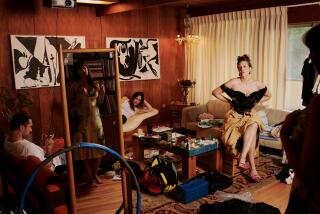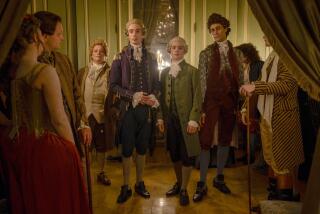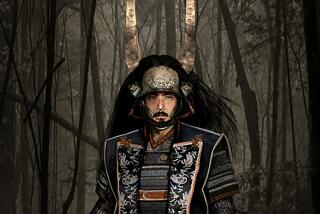Hank, you sexy devil!
- Share via
SORRY, Hans Holbein. Hollywood is quashing the indelible image you created of King Henry VIII as a fat, paunchy monarch. Two projects -- Showtime’s mega-series “The Tudors” and Columbia’s upcoming “The Other Boleyn Girl” -- are turning the British ruler into a haute hottie, thanks to some royally stylish threads.
Of course it doesn’t hurt that the hunky Jonathan Rhys Meyers and Eric Bana play Henry. But Rhys Meyers’ slightly modernized, leather get-ups in “The Tudors” and Bana’s sumptuous, velvety-smooth ensembles in “Boleyn Girl” make for a far sexier king than the stuffy gent in Holbein’s paintings. “The more you read about him, all the languages he spoke, all the sports he played, it’s quite sad how the only memory many people have of him is someone who ate chicken legs all the time,” says Joan Bergin, costume designer for “The Tudors.”
Indeed, history books reveal that Henry was quite the stud during his youth, and it’s these earlier years that Bergin translates for the Showtime project. The designer first immersed herself in the accuracy of Tudor style and then “deconstructed” it to make the elaborately ornamented look less jarring for today’s audiences. She made silhouettes trimmer and proportions narrower, resulting in “foxier” garments, such as a gold-trimmed black velvet tunic that could pass on a Galliano runway. She also took inspiration from contemporary fashion icons such as Issey Miyake, tracking down a luxe gold fabric that the Japanese designer created years ago to use in the court’s costumes for a banquet scene. For the dance sequence where Henry first meets Anne Boleyn, a 16th century style corset and trousers Bergin spotted in a Balenciaga show proved to be major influences. “It was like this big Celtic circle,” she says. “He was influenced by Elizabethan times; I was influenced by him; and then I looked at his designs and tried to Tudor-ize them more.”
Sandy Powell’s vision for “The Other Boleyn Girl” created a dashing king too, but the Oscar-winning costume designer’s looks paid closer attention to the authenticity captured in Holbein’s paintings. She mimicked wardrobe staples seen throughout the artworks, including gilded brocade shirts and fur-trimmed coats. And the artist’s prolific career proved particularly helpful, since Powell and her team ended up making nearly every garment: It seems “The Tudors” was filming at the same time and “had rented every Tudor costume on the planet,” Powell says.
But unlike the king’s wardrobe in the series, there was no slimming of silhouettes in the film (opening in December), with many of Bana’s outfits using up to 20 meters of fabric. Powell did, however, do away with the padding often found around the monarch’s shoulders and chest to accentuate his physique. “Eric is tall and broad-shouldered already,” she says. “The sheer volume of fabric in each costume was enough to accentuate what was there.”
The clothing of the era may have been partially to blame for Henry’s butterball image, according to Kevin Jones, fashion historian at the Fashion Institute of Design & Merchandising. “Fabric was extremely valuable back then,” Jones says, “so the king liked to layer all these rich silks and velvets. It was conspicuous consumption. He wasn’t really that rotund.”






